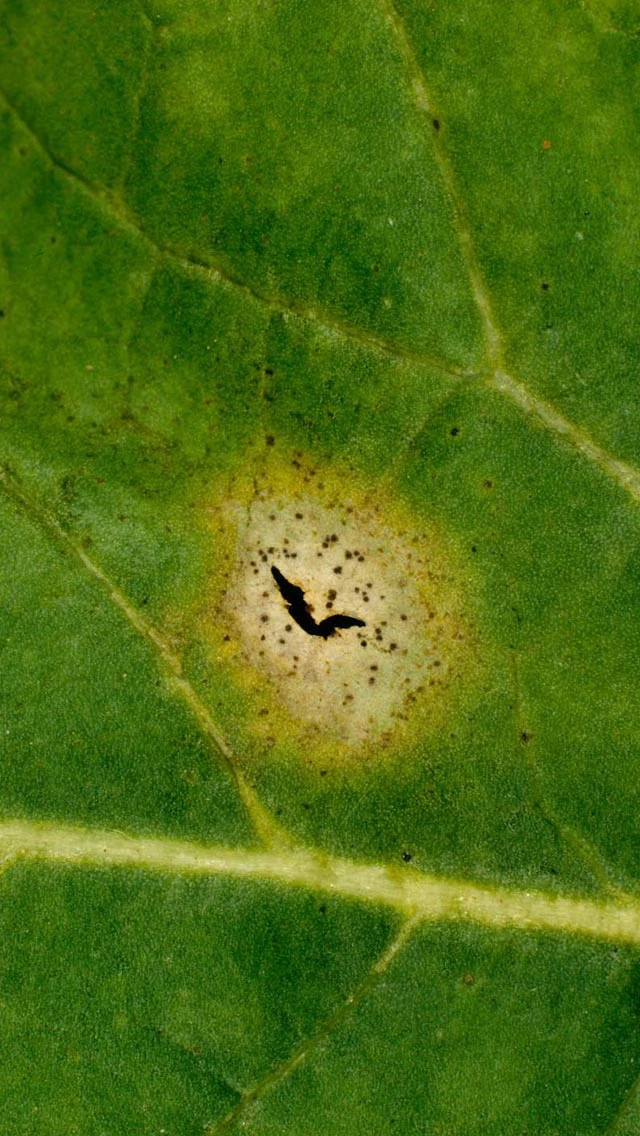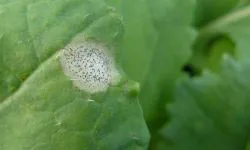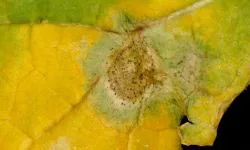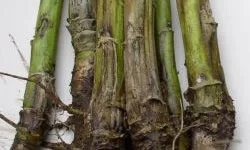
Phoma Stem Canker
Leptosphaeria maculans (asexual stage Phoma A - Phoma lingam) Leptosphaeria biglobosa (asexual stage Phoma B - Phoma lingam

Leptosphaeria maculans (asexual stage Phoma A - Phoma lingam) Leptosphaeria biglobosa (asexual stage Phoma B - Phoma lingam

Phoma leaf spot initial infection
In England Phoma is the main serious autumn disease problem for oilseed rape and later sown crops are at greatest risk. The pathogen's impact is more noticeable in the following summer when stem canker develops and plants ripen prematurely or lodge where stems are weakened. Typical yield losses in unprotected crops of susceptible varieties are in the range of 0.5 to 0.7 t/ha.
In the UK the principle source of initial infection is air-borne ascospores released from the stubble or debris of a previous oilseed rape crop in proximity to a new crop during warm, humid weather. They are dispersed by air currents and land on and infect the leaves, and sometime root collars, of young plants where lesions develop. Early epidemics are associated with above average rainfall in August and September. If the cotyledons are infected, seedlings may die in the autumn.

Phoma leaf spot causing partial leaf death
Phoma leaf spot infection can begin from September as crops emerge. The initial symptoms are white to fawn circular lesions which become dotted with small black fruiting bodies. These leaf lesions are green underneath. Occasionally they cause partial leaf death before winter, but generally have a minimal effect on growth until spring.

Stem Canker symptoms on infected stems
These large leaf lesions are caused by Leptosphaeria maculans (Phoma A). A second species, Leptosphaeria biglobosa (Phoma B) produces small dark lesions with few fruiting bodies. L. biglobosa can spread to stems but has less impact than L. maculans on yield. Subsequently the fungus grows from the leaf spot to the stem via the petiole. The rate of this growth varies widely; from 5mm per day at 20°C down to 1mm per day at 5°C. In summer these stem cankers cause lodging and premature ripening.

Close up Stem Canker symptom
Sunken brown stem canker symptoms appear around six months after initial infection. They gradually enlarge, girdle the stem and weaken it leading to early ripening, lodging and plant death. There may be some spread to pods which develop brown lesions with a black margin, potentially leading to premature ripening and seed infection which can be a secondary source of infection spreading to new crops. Although a second type of spore (pycnidiospore) is produced on leaf lesions, these are considered to be of minor importance under UK conditions.
Varietal resistance to Phoma canker is provided in the HGCA recommended lists. It should be noted that varietal resistance alone cannot be relied upon for stem canker control. A combination of varietal resistance and chemical treatment is needed for robust and sustainable control.
The implications of a resistant variety are that you can correctly time fungicide applications in the autumn. In addition to varietal selection, thorough cultivation that buries the stubble of previous oilseed rape crops in close proximity to new crops and any resting spores in the soil can greatly reduce its impact. Early drilling can also be helpful, as the fungus will take longer to reach the stem of advanced plants with larger leaves.
Proline275 (prothioconazole) can be used throughout your disease control programme, and gives you outstanding performance on Phoma in the autumn.


